Research Progress on the Development of the Planter Unit for Furrowing Control and the Depth Measurement Technology
Abstract
:1. Introduction
2. Data Collection
3. Furrowing Depth Stability Control—Design of Profiling Adjustment Device
3.1. Passive Profiling Adjusting Device
3.1.1. Parallel Four-Bar Mechanism and Depth-Limiting Wheel
3.1.2. Mechanical Spring-Type Downforce Adjustment Device
3.2. Active Profiling Adjusting Device
3.2.1. Hydraulically Driven Downforce Adjustment Device
3.2.2. Pneumatic Driven Downforce Adjustment Device
4. Furrowing Depth Stability Control—Furrowing Depth Detection Technology
4.1. Noncontact Detection Method
4.2. Contact Detection Method
4.3. Ingression Detection Method
5. Furrowing Depth Stability Control—Automatic Control System
5.1. System Feedback Regulation
5.2. System Downforce Adjustment
5.3. Multi-System Fusion Regulation
6. Future Development Problems and Prospects
6.1. Existing Problems
- (1)
- The research on the furrowing system mainly focuses on flat land. The traditional furrowing depth control system can only cope with the simple ups and downs of sloping land. It is challenging to cope with sloping land’s left and right ups and downs.
- (2)
- Downforce adjustment is a crucial factor affecting the stability of furrowing. Most of the current seeding machines rely on experience to adjust the downforce and do not consider different soil textures of different plots in real-time adjustment.
- (3)
- The profiling adjustment device is mainly micro-innovation or adds sensors to improve adjustment accuracy, but more research on vibration balance needs to be done. Due to the complex field operating conditions, the vibration of the planter unit would affect the stability of the furrow depth and reduce the machine’s operating life.
- (4)
- The planter for furrow depth sensor detection is in the experimental stage, and there are fewer related operating machines equipped with furrow depth detection sensors. Most of the research is still in the single-sensor detection stage. Due to the limitations of the single-sensor, significant detection errors are frequent.
- (5)
- The research on the furrowing depth control system is in the experimental stage, mainly focusing on simple downforce control or sowing depth control with poor regulation accuracy. The research on the planter furrowing system should consider different agronomic requirements due to different soil textures in different regions to improve the system’s universality.
6.2. Development Prospects
- (1)
- Given the operating shorts on sloping arable land in China, we should improve the traditional seeder furrow profiling control, solving the operating needs of sloping arable land in terms of up-and-down and left-and-right profile, improving the effect of seeding operation in sloping arable land and improving the universality of the seeding machine.
- (2)
- For the differences in soil properties, crop varieties, and planting modes in different regions of China, we need to determine the most suitable sowing depths and downforce of planter operations for sowing crops in different regions according to the interplay mechanism of soil–furrowing–crop components, to provide references for sowing.
- (3)
- Strengthen the optimized design of the profiling adjustment device, reduce the vibration of the profiling adjustment device in the operation process, and improve its stability. Under the premise of ensuring that the operating effect remains unchanged, reduce the operating cost of implements and improve the working life of implements.
- (4)
- Enhance the development of active profiling adjustment systems and improve the stability of the system by using multi-sensor fusion on top of the existing ones. Promote the development of China’s seeding machine in the direction of high speed and precision and improve the operational quality and efficiency of China’s seeding machine.
- (5)
- Based on the development of an active profiling adjustment system, optimize the algorithm by combining the physicochemical parameters of different soils and develop a furrow depth control system suitable for different soils to improve the detection accuracy and convenience of the system.
- (6)
- Increase the investment in the research and development of intelligent agricultural machinery and devices and promote the development of China’s seeding machines in the direction of automatic navigation, automatic monitoring, and evaluation of seeding quality, variable seeding, high-speed seeding, and other intelligent precision seeding.
7. Conclusions
Supplementary Materials
Author Contributions
Funding
Institutional Review Board Statement
Informed Consent Statement
Data Availability Statement
Conflicts of Interest
References
- Muangprathub, J.; Boonnam, N.; Kajornkasirat, S.; Lekbangpong, N.; Wanichsombat, A.; Nillao, P. Iot and Agriculture Data Analysis for Smart Farm. Comput. Electron. Agric. 2019, 156, 467–474. [Google Scholar] [CrossRef]
- Wang, Q.; He, J.; Lu, C.; Wang, C.; Lin, H.; Yang, H.; Li, H.; Wu, Z. Modelling and Control Methods in Path Tracking Control for Autonomous Agricultural Vehicles: A Review of State of the Art and Challenges. Appl. Sci. 2023, 13, 7155. [Google Scholar] [CrossRef]
- Liu, C.L.; Lin, H.Z.; Li, Y.M.; Gong, L.; Miao, Z.H. Analysis on Status and Development Trend of Intelligent Control Technology for Agricultural Equipment. Trans. Chin. Soc. Agric. Mach. 2020, 51, 18. [Google Scholar] [CrossRef]
- Yuan, Y.W.; Bai, H.J.; Fang, X.F.; Wang, D.C.; Zhou, L.M.; Niu, K. Research Progress on Maize Seeding and Its Measurement and Control Technology. Trans. Chin. Soc. Agric. Mach. 2018, 49, 18. [Google Scholar] [CrossRef]
- Yuan, Y.W.; Zhang, X.C.; Wu, C.C.; Zhang, C.C.; Zhang, J.N.; Zhou, L.M. Precision Control System of No-Till Corn Planter. Trans. CSAE 2011, 28, 222–226. [Google Scholar] [CrossRef]
- Berti, M.T.; Johnson, B.L.; Henson, R.A. Seeding Depth and Soil Packing Affect Pure Live Seed Emergence of Cuphea. Ind. Crop. Prod. 2008, 27, 272–278. [Google Scholar] [CrossRef]
- Gupta, S.C.; Schneider, E.C.; Swan, J.B. Planting Depth and Tillage Interactions on Corn Emergence. Soil Sci. Soc. Am. J. 1988, 52, 1122–1127. [Google Scholar] [CrossRef]
- Yang, W.C.; He, J.; Lu, C.Y.; Lin, H.; Yang, H.Y.; Li, H. Current Situation and Future Development Direction of Soil Covering and Compacting Technology under Precision Seeding Conditions in China. Appl. Sci. 2023, 13, 6586. [Google Scholar] [CrossRef]
- Zhu, W.H.; Tie, S.G.; Sun, J.J.; Lu, C.Y.; Qi, J.S.; Zhou, K. Effect of Different Soil Texture and Depth of Sowing Seed on the Seedling Emergence Potential of Sweet Corn Hybrid. J. Henan Agric. Sci. 2005, 11, 35–36. [Google Scholar] [CrossRef]
- Xu, H.T.; Wang, Q.J.; Wang, Y.H.; Xu, B.; Wang, C.Y. Effects of sowing depth difference on maize seed germination and seedling emergence, seedling characteristics and root system trait. J. Henan Inst. Sci. Technol. 2020, 48, 10–17. [Google Scholar] [CrossRef]
- Nadeem, M.; Mollier, A.; Pellerin, S. Effects of Sowing Depth on Remobilization and Translocation of Seed Phosphorus Reserves. J. Anim. Plant. Sci. 2018, 28, 934–939. [Google Scholar]
- Ozmerzi, A.; Karayel, D.; Topakci, M. Effect of Sowing Depth on Precision Seeder Uniformity. Biosyst. Eng. 2002, 82, 227–230. [Google Scholar] [CrossRef]
- Poncet, A.M.; Fulton, T.P.; McDonald, T.P.; Knappenberger, T.; Shaw, J.N.; Bridges, R. Effect of Heterogeneous Field Conditions on Corn Seeding Depth Accuracy and Uniformity. Appl. Eng. Agric. 2018, 34, 819–830. [Google Scholar] [CrossRef]
- Poncet, A.M.; Fulton, T.P.; McDonald, T.P.; Knappenberger, T.; Shaw, J.N. Corn Emergence and Yield Response to Row-Unit Depth and Downforce for Varying Field Conditions. Appl. Eng. Agric. 2019, 35, 399–408. [Google Scholar] [CrossRef]
- Poncet, A.M.; Fulton, T.P. Emergence of Corn According to the Sowing Depth of the Seed and Loads on Press Wheels. Engenharia Agricola 2012, 32, 326–332. [Google Scholar] [CrossRef]
- Pedro, H.; Angelo, R.C. Sensor Systems for Measuring Soil Compaction: Review and Analysis. Comput. Electron. Agric. 2008, 63, 89–103. [Google Scholar] [CrossRef]
- Bai, W.; Sun, Z.X.; Zhang, L.Z.; Zhang, J.M.; Feng, L.S.; Cai, Q.; Xiang, W.Y.; Feng, C.; Zhang, Z. Furrow Loose and Ridge Compaction Plough Layer Structure Optimizing Root Morphology of Spring Maize and Improving Its Water Use Efficiency. Trans. CSAE 2019, 35, 97–106. [Google Scholar] [CrossRef]
- Xu, W.Q.; Yang, Q.F.; Niu, J.Y.; Xiong, C.R.; Zhang, Y.X. Effects of Temperatures and Soil Moisture Content on Seed Germination and Seedling Growth Characteristics of Maize. J. Maize. Sci. 2013, 21, 69–74. [Google Scholar] [CrossRef]
- Guan, X.K.; Yang, M.D.; Bai, T.T.; Han, J.L.; Huang, J.; Wang, J.L.; Wang, T.C. Suitable Deep Sowing Increasing Emergence Rate and Promoting Summer Maize Growth in Seeding Stage under Subsurface Drip Irrigation. Trans. CSAE 2016, 32, 75–80. [Google Scholar] [CrossRef]
- Song, D.X. Study on the Planting Depth Stability of Precision Planter Unit. J. Laiyang Agric. College 1995, 12, 311–315. [Google Scholar]
- Jia, H.L.; Zheng, J.X.; Yuan, H.F.; Guo, M.Z.; Wang, W.J.; Jiang, X.M. Design and Experiment of Profiling Sliding-Knife Opener. Trans. CSAE 2017, 33, 16–24. [Google Scholar] [CrossRef]
- Zhang, M.H.; Luo, X.W.; Wang, Z.M.; Wang, B.L.; Xue, Z.L. Optimization Design and Experiment of Profiling and Slide Board Mechanism of Precision Rice Hill-Drop Drilling Machine. Trans. CSAE 2017, 33, 18–26. [Google Scholar] [CrossRef]
- Xie, B.B.; Jia, Y.C.; Faheem, M.; Gao, W.J.; Liu, J.Z.; Jiang, H.K.; Cai, L.J.; Li, Y.X. Research Progress of Autonomous Navigation Technology for Multi-Agricultural Scenes. Comput. Electron. Agric. 2023, 211, 107963. [Google Scholar] [CrossRef]
- Bai, X.H.; Li, F.; Zhang, Z.L.; Lin, J.; Hu, Y.Q.; Lu, C.Y. Parameter optimization for the Profiling Mechanism Spring of No-Till Planter Based on ADAMS. Agric. Res. Arid Areas 2014, 6, 268–272. [Google Scholar]
- Cao, X.P. Research on Key Technology and Device of No-Tillage Seeding Depth Control in Northeast Black Soil Region of China. Ph.D. Thesis, China Agricultural University, Beijing, China, 2023. [Google Scholar]
- Gao, Y.Y.; Zhai, C.Y.; Yang, S.; Zhao, X.G.; Wang, X.; Zhao, C.J. Measurement Method and Mathematical Model for the Seeding Downforce of Planter Row Unit. Trans. CSAE 2020, 5, 9. [Google Scholar] [CrossRef]
- Yang, L.; Zhang, R.; Liu, Q.W.; Yin, X.W.; He, X.T.; Cui, T.; Zhang, D.X. Row Cleaner and Depth Control Unit Improving Sowing Performance of Maize No-Till Precision Planter. Trans. CSAE 2016, 32, 18–23. [Google Scholar] [CrossRef]
- From Cleaning to Closing|The Three C’s of Emergence. Available online: https://www.precisionplanting.com/agronomy/research/from-cleaning-to-closing-the-three-cs-of-emergence (accessed on 16 September 2023).
- 1590 No Tillage Seeder. Available online: https://www.deere.com.cn/zh/ (accessed on 16 September 2023).
- MECAV4/4E Recommended by Sugarbeet Growers. Available online: https://www.monosem.com/precision-planters/single-seed-planter/mechanical-planter/meca-v4-4e/ (accessed on 16 September 2023).
- KUHN Maxima Precision Seeder. Available online: https://wd.nongji360.com/product/view?id=74236&dmname=shop00150083 (accessed on 16 September 2023).
- Kverneland OPTIMA R Precision Seeder. Available online: https://www.kverneland.cn/node_81064/node_225376/optima-r (accessed on 16 September 2023).
- JLKD 2BMZF-2 No Tillage Finger Clip Precision Fertilization and Seeding Machine. Available online: https://www.nongjitong.com/product/40020.html (accessed on 16 September 2023).
- Doublelan 2BMJZ-3 Traction No Tillage Finger Clip Precision Seeder. Available online: https://www.nongjitong.com/product/shenyangshuanglan_2bmjz-3_seeder.html (accessed on 16 September 2023).
- 2BYFSF-4D Corn No-Tillage Fertilization Precision Seeder. Available online: http://www.nonghaha.com/productinfo/1246191.html (accessed on 16 September 2023).
- Zhao, S.H.; Jiang, E.C.; Yan, Y.X.; Yang, Y.Q.; Tian, B.L. Design and motion simulation of opener with bidirectional parallelogram linkage profiling mechanism on wheat seeder. Trans. CSAE 2013, 29, 26–32. [Google Scholar] [CrossRef]
- Yang, J.; Zhou, W.Y.; Dai, F. Design and Test of Corn Precision Seeder for Dry-Land Whole Film Double Furrow Sowing. Agric. Res. Arid Areas. 2014, 4, 262–268. [Google Scholar]
- Shi, L.R.; Zhou, W.Y.; Sun, W.; Li, R.B.; Sun, B.G. Parameters Optimization of Speed Compensation Mechanism of Electric Driving Maize Planter with Dibbling on Membrane. Trans. Chin. Soc. Agric. Mach. 2017, 48, 87–94. [Google Scholar] [CrossRef]
- Xiang, D.X. Research on Key Parts of High-speed Vacuum Precision Planter Matched with Soybean Narrow-Row-Flat-Dense Seeding Technique. Ph.D. Thesis, Northeast Agricultural University, Harbin, China, 2010. [Google Scholar]
- Cui, T.; Zhang, D.X.; Yang, L.; Gao, N.N.; Wang, X.; Zhao, C.J. Design and Experiment of Collocated-Copying and Semi-Low-Height Planting-Unit for Corn Precision Seeder. Trans. CSAE 2012, 28, 18–23. [Google Scholar]
- 1775NT 16Row30 Drawn Planter. Available online: https://www.deere.com/en/planting-equipment/1775nt-16row30-planter/# (accessed on 16 September 2023).
- Zhang, R.; Cui, T.; Han, D.D.; Zhang, D.X.; Li, K.H.; Yin, X.W.; Wang, Y.X.; He, X.T.; Yang, L. Design of Depth-Control Planting Unit with Single-Side Gauge Wheel for No-Till Maize Precision Planter. Int. J. Agric. Biol. Eng. 2016, 9, 56–64. [Google Scholar] [CrossRef]
- Zhang, R.; Wei, J.T.; Zhang, D.X.; Cui, T.; Yan, B.X.; He, X.T.; Han, D.D. Effects of Wheat Residue and Depth-Control Mechanism of No-Till Seeder on Corn Sowing Performance. Emir. J. Food Agric. 2018, 30, 660–667. [Google Scholar] [CrossRef]
- Yang, Q.C.; Xuo, L.L.; Du, Y.F.; Lang, C.C.; Pan, W.J. Design and Experiment of the Pressing Wheel Profiling Ditching Device for Sowing Panax Notoginseng to Grow Seedlings. Trans. CSAE 2020, 36, 53–62. [Google Scholar] [CrossRef]
- Lu, J.Q.; Yang, X.H.; Feng, X.; Li, Z.H.; Li, J.C.; Liu, Z.Y. Design and Experiment of Sowing Depth Control Device of Potato Planter. Trans. CSAE 2020, 36, 12–21. [Google Scholar] [CrossRef]
- Dai, F.; Guo, W.J.; Song, X.F.; Shi, R.J.; Zhao, W.Y.; Zhang, F.W. Design and Field Test of Crosswise Belt Type Whole Plastic-Film Ridging-Mulching Corn Seeder on Double Ridges. Int. J. Agric. Biol. Eng. 2019, 12, 88–96. [Google Scholar] [CrossRef]
- 1745 Compact Planter. Available online: https://www.deere.ca/en/planting-equipment/1745-planter/ (accessed on 18 September 2023).
- 1725C Planter. Available online: https://www.deere.ca/en/planting-equipment/1725c-planter/ (accessed on 18 September 2023).
- MAXIMETRO Series Traction Precision Seeder. Available online: https://www.agriexpo.cn/prod/maschio-gaspardo/product-169098-141391.html (accessed on 18 September 2023).
- NEW 5900 Planter. Available online: https://www.kinze.com/planters/5900-planter/ (accessed on 18 September 2023).
- Cai, G.H.; Li, H.; Li, H.W.; Wang, Q.J.; He, J.; Ni, J.L. Design of Test-Bed for Automatic Depth of Furrow Opening Control System Based on Atmega128 Single Chip Microcomputer. Trans. CSAE 2011, 27, 11–16. [Google Scholar] [CrossRef]
- Fu, W.Q.; Dong, J.J.; Mei, H.B.; Gao, N.N.; Lu, C.Y.; Zhang, J.X. Design and Test of Maize Seeding Unit Downforce Control System. Trans. Chin. Soc. Agric. Mach. 2018, 49, 68–77. [Google Scholar] [CrossRef]
- Bai, H.J.; Fang, X.F.; Wang, D.C.; Yuan, Y.W.; Zhou, L.M.; Niu, K. Design and Test of Control System for Seeding Depth and Compaction of Corn Precision Planter. Trans. Chin. Soc. Agric. Mach. 2018, 51, 61–72. [Google Scholar] [CrossRef]
- Zhao, J.H.; Yang, X.J.; Liu, L.J.; Liu, Z.J.; Zhou, J.P.; Jin, C. Mechanical Performance Testing Device for Planter Openers Based on PLC. Trans. Chin. Soc. Agric. Mach. 2014, 45, 29–34. [Google Scholar] [CrossRef]
- Kokoshin, S.N.; Kirgintsev, B.O.; Tashlanov, V.I. Disc seeder with auto tracking system depth of sowing seeds. EMMFT 2020, 1614, 012051. [Google Scholar] [CrossRef]
- Zhang, C.L.; Wu, X.Q.; Xie, D.B.; Wang, Q.Q.; Zhang, J.; Chen, L.Q. Design and Experiment of Electro-hydraulic Mixed Garlic Planter. Trans. Chin. Soc. Agric. Mach. 2021, 52, 166–174. [Google Scholar] [CrossRef]
- Zhang, L.G.; Zhang, J.Z.; Jia, L.P.; Huang, W.H.; Zhang, X.W. Future and Development of Air Springs. J. Vib. Shock. 2007, 26, 146–151. [Google Scholar]
- Fu, W.Q. Study on Key Technology of Quality Control for Maize No Tillage Drilling Machinery. Ph.D. Thesis, China Agricultural University, Beijing, China, 2018. [Google Scholar]
- Gao, Y.Y.; Wang, X.; Yang, S.; Zhao, X.G.; Dou, H.J.; Zhao, C.J. Design and Test of Pneumatic Downforce Control System for Planting. Trans. Chin. Soc. Agric. Mach. 2019, 50, 19–29. [Google Scholar] [CrossRef]
- Zhou, S.H.; Wang, Z.H.; Huang, D.Y. No-Till Planter Sowing Intelligent Depth Regulation System Based on Flex Sensor. J. Jilin Univ. 2020, 38, 555–562. [Google Scholar] [CrossRef]
- Cao, X.P.; Wang, Q.J.; Xu, D.J.; Huang, S.H.; Wang, X.H.; Wang, L.B. Design and Analysis of Pneumatic Downforce Regulating Device for No-Till Corn Planter. Agriculture 2022, 12, 1513. [Google Scholar] [CrossRef]
- Planter Hydraulic Downforce with Uplift. Available online: https://www.agleader.com/planting/sureforce/ (accessed on 13 October 2023).
- Liu, Q.W.; He, X.T.; Yang, L.; Zhang, D.X.; Cui, T.; Qu, Z.; Yan, B.X.; Wang, M.T.; Zhang, T.L. Effect of travel speed on seed spacing uniformity of corn seed meter. Int. J. Agric. Biol. Eng. 2017, 10, 98–106. [Google Scholar] [CrossRef]
- Nielsen, S.K.; Munkholm, L.J.; Lamandé, M.; Nørremark, M.; Skou-Nielsen, N.; Edwards, G.; Green, O. Seed Drill Instrumentation for Spatial Coulter Depth Measurements. Comput. Electron. Agric. 2017, 141, 207–214. [Google Scholar] [CrossRef]
- Zhang, B.; Zhang, W.; Qi, L.Q.; Fu, H.B.; Yu, L.J.; Li, R.; Zhao, Y.; Ma, X.X. Information Acquisition System of Multipoint Soil Surface Height Variation for Profiling Mechanism of Seeding Unit of Precision Corn Planter. Int. J. Agric. Biol. Eng. 2018, 14, 54–64. [Google Scholar] [CrossRef]
- Linden, S.; Mouazen, A.M.; Anthonis, J.; Ramon, H.; Saeys, W. Infrared Laser Sensor for Depth Measurement to Improve Depth Control in Intra-Row Mechanical Weeding. Biosyst. Eng. 2008, 100, 309–320. [Google Scholar] [CrossRef]
- Lee, J.; Yamazaki, M.; Oida, O.; Nakashima, H.; Shimizu, H. Electro-Hydraulic Tillage Depth Control System for Rotary Implements Mounted on Agricultural Tractor Design and Response Experiments of Control System. J. Terramechanics 1998, 35, 229–238. [Google Scholar] [CrossRef]
- Mouazen, A.M.; Anthonis, J.; Saeys, W.; Ramon, H. An Automatic Depth Control System for Online Measurement of Spatial Variation in Soil Compaction, Part 1: Sensor Design for Measurement of Frame Height Variation from Soil Surface. Biosyst. Eng. 2004, 89, 139–150. [Google Scholar] [CrossRef]
- Jia, H.L.; Guo, M.Z.; Yu, H.B.; Li, Y.; Feng, X.Z.; Zhao, J.L.; Qi, J.T. An Adaptable Tillage Depth Monitoring System for Tillage Machine. Biosyst. Eng. 2016, 151, 187–199. [Google Scholar] [CrossRef]
- Jia, H.L.; Zhu, L.T.; Huang, D.Y.; Wang, Q.; Li, M.W.; Zhao, J.L. Automatic Control System of Sowing Depth for No-Tillage Planter Based on Flex Sensor. J. Jilin Univ. 2019, 49, 166–175. [Google Scholar] [CrossRef]
- Huang, D.Y.; Zhu, L.T.; Jia, H.L.; Yu, T.T. Automatic Control System of Seeding Depth Based on Piezoelectric Film for No-Till Planter. Trans. Chin. Soc. Agric. Mach. 2015, 46, 1–8. [Google Scholar] [CrossRef]
- Li, M.W.; Xia, X.M.; Zhu, L.T.; Zhou, R.Y.; Huang, D.Y. Intelligent Sowing Depth Regulation System Based on Flex Sensor and Mamdani Fuzzy Model for a No-Till Planter. Int. J. Agric. Biol. Eng. 2021, 14, 145–152. [Google Scholar] [CrossRef]
- LI, Y.H.; Meng, P.X.; Geng, D.Y.; He, K.; Meng, F.H.; Jiang, M. Intelligent System for Adjusting and Controlling Corn Seeding Depth. Trans. Chin. Soc. Agric. Mach. 2016, 47, 8. [Google Scholar] [CrossRef]
- Weatherly, E.T.; Bowers, C.G. Automatic Depth Control of a Seed Planter Based on Soil Drying Front Sensing. Trans. ASABE 1997, 40, 295–305. [Google Scholar] [CrossRef]
- Cujbescu, D.; Găgeanu, I.; Persu, C.; Matache, M.; Vlădut, V.; Voicea, I.; Paraschiv, G.; Biris, S.S.; Ungureanu, N.; Voicu, G.; et al. Simulation of Sowing Precision in Laboratory Conditions. Appl. Sci. 2021, 11, 6264. [Google Scholar] [CrossRef]
- Gao, Y.Y.; Wang, X.; Yang, S.; Zhai, C.Y.; Zhao, X.G.; Zhao, C.J. Development of CAN-based Sowing Depth Monitoring and Evaluation System. Trans. Chin. Soc. Agric. Mach. 2019, 50, 23–32. [Google Scholar] [CrossRef]
- Qiao, J.Y.; Zhang, D.; Zhang, H.B.; Zhang, B.; Chen, H.T.; Chen, L.P.; Zheng, D.M.; Sun, J. Effects of Soil Compaction by Various Tractors on Soil Penetration Resistance and Soybean Yields. Trans. CSAE 2019, 34, 26–33. [Google Scholar] [CrossRef]
- Badua, S.A.; Sharda, A.; Strasser, R.; Ciampitti, I. Ground speed and planter downforce infuence on corn seed spacing and depth. Precis. Agric. 2021, 22, 1154–1170. [Google Scholar] [CrossRef]
- Zhao, J.H.; Liu, L.J.; Yang, X.J.; Liu, Z.J.; Tang, J.X. Design and Laboratory Test of Control System for Depth of Furrow Opening. Trans. CSAE 2015, 31, 35–41. [Google Scholar] [CrossRef]
- Liang, F.; Lei, Q.A.; Zheng, S.Y.; Wang, P.; Guo, Z.; Liu, W. Design and Experiment of Electro-Hydraulic Profiling System with Consistent Pressure for Drilling Depth of Furrow Opener. Trans. CSAE 2019, 35, 8. [Google Scholar] [CrossRef]
- Zhou, L.; Ma, Y.; Zhou, H.; Niu, K.; Zhao, B.; Wei, L.; Bai, S.; Zheng, Y.; Zhang, W. Design and Test of Sowing Depth Measurement and Control System for No-Till Corn Seeder Based on Integrated Electro-Hydraulic Drive. Appl. Sci. 2023, 13, 5823. [Google Scholar] [CrossRef]
- Nielsen, S.K.; Nørremark, M.; Green, O. Sensor and Control for Consistent Seed Drill Coulter Depth. Comput. Electron. 2016, 126, 690–698. [Google Scholar] [CrossRef]
- Ding, Q.S.; You, Y.; Xing, Q.D.; Xu, G.M.; Liang, L. Field Bench Test of Seeding Unit Based on Precise Seeding Depth Control Objective. Trans. Chin. Soc. Agric. Mach. 2022, 11, 100–107. [Google Scholar] [CrossRef]
- Liu, W.D.; Tollenaar, M.; Stewart, G.; Deen, W. Impact of Planter Type, Planting Speed, and Tillage on Stand Uniformity and Yield of Corn. Agron. J. 2004, 96, 1668–1672. [Google Scholar] [CrossRef]
- Jing, H.R.; Zhang, D.X.; Wang, Y.X.; Yang, L.; Fan, C.L.; Zhao, H.H.; Wu, H.L.; Zhang, Y.H.; Pei, J.C.; Cui, T. Development and Performance Evaluation of an Electro-Hydraulic Downforce Control System for Planter Row Unit. Comput. Electron. 2020, 172, 105073. [Google Scholar] [CrossRef]
- Li, B.S.; Tan, Y.; Chen, J.; Liu, X.X.; Yang, S.H. Precise Active Seeding Downforce Control System Based on Fuzzy PID. Math. Probl. Eng. 2020, 5123830. [Google Scholar] [CrossRef]
- Precision Planting. Available online: https://www.precisionplanting.com/products/all-products (accessed on 18 September 2023).
- Virk, S.S.; Fulton, J.P.; Porter, W.M.; Pate, G.L. Row-Crop Planter Performance to Support Variable-Rate Seeding of Maize. Precis. Agric. 2020, 21, 603–619. [Google Scholar] [CrossRef]
- Suomi, P.; Oksanen, T. Automatic Working Depth Control for Seed Drill Using ISO 11783 Remote Control Messages. Comput. Electron. Agric. 2015, 116, 30–35. [Google Scholar] [CrossRef]
- Gao, Y.Y.; Zhai, C.Y.; Yang, S.; Zhao, X.G.; Wang, X.; Zhao, C.J. Development of CAN-based Downforce and Sowing Depth Monitoring and Evaluation System for Precision Planter. Trans. Chin. Soc. Agric. Mach. 2020, 51, 15–28. [Google Scholar] [CrossRef]
- Fu, W.Q.; Dong, J.J.; Cong, Y.; Lu, C.Y.; Gao, N.N.; Zhang, J.X. Design and Test of Farmland-terrain Simulation System for Corn Sowing Depth Control. Trans. Chin. Soc. Agric. Mach. 2017, 48, 56–65. [Google Scholar] [CrossRef]
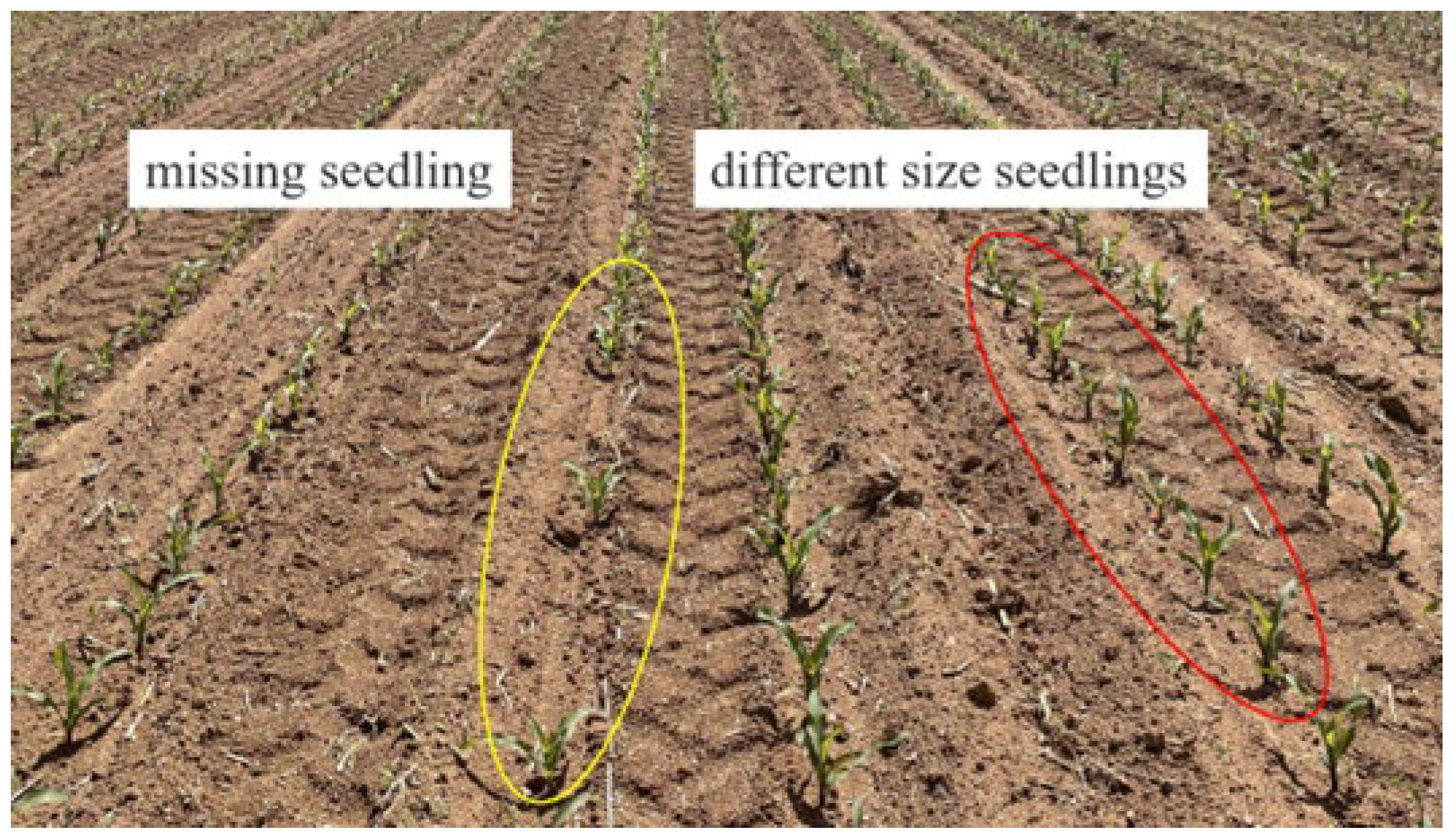

| Types | Partial Structure | Main Features |
|---|---|---|
| Mechanical-spring type |  | Simple structure, high reliability, wide range of applications; easy to install and adjust; preload needs to be adjusted empirically according to the condition of the ground before operation; unstable downforce on the ground |
| Hydraulic -drive type [28] |  | Requires sensor-assisted adjustment; complex structure; fast response time, suitable for high-speed operation; provides larger force and torque, adjustable range, high stability |
| Pneumatic-drive type | 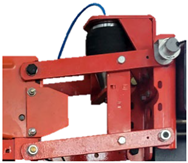 | Requires sensor-assisted adjustment; requires external air supply unit; can withstand very high pressure and vibration impact; good vibration damping effect; high stability of seed drop |
| Model Number | Enterprise Name | Machine Pictures | Sowing Crops | Main Features |
|---|---|---|---|---|
| 1590 Series No-Till Strip Planter [29] | John Deere | 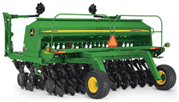 | Wheat | Adopting monobloc profiling pressure spring type. |
| MECA V4 Series Precision Planter [30] | MONSEM |  | Sugar beet; chicory; rapeseed | Mechanical spring-loaded front position profiling adjustment |
| Maxima Precision Spreader [31] | KUHN |  | Corn; sunflower; sugar beet | Using tension springs to increase downforce; double parallel four-link structure |
| OPTIMA R Precision Planter [32] | Kverneland |  | Corn; sunflower; sugar snap pea; sugar beet | Mechanical spring-loaded seeding monobloc independent profiling; infinitely adjustable depth-limiting wheel floating profiling |
| 2BMZF Series No-Till Planter [33] | JLKD | 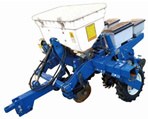 | Corn | Mechanical spring-loaded downforce adjustment, row spacing 40–70 mm adjustable |
| 2BMJZ Series No-Till Planter [34] | Doublelan |  | Corn | Mechanical spring-loaded downforce adjustment, row spacing 45–65 mm adjustable |
| 2BYFSF Series No-Till Planter [35] | Nonghaha | 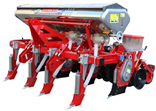 | Corn | Mechanical spring-loaded rear profiling adjustment, independent floating compacting wheel |
| Model Number | Enterprise Name | Machine Pictures | Sowing Crops | Main Features |
|---|---|---|---|---|
| 1745 Series [47] | John Deere | 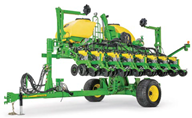 | Soybean; corn | Active pneumatic downforce profiling adjustment |
| 1725C Series [48] | John Deere |  | Cotton | Active pneumatic downforce or single-row hydraulic downforce profiling adjustment |
| Maximetro Series [49] | Maschio |  | Corn; soybean; beet | Active pneumatic downforce profiling adjustment |
| 5900 Series [50] | Kinze |  | Corn; sugar beets; milo; cotton; oil sunflower; soybean | Single-row hydraulic downforce adjustment; true depth downforce control system |
| Sensor Types | Installation Position | Main Features | Parts Pictures | Reference Author |
|---|---|---|---|---|
| Ultrasonic | In front of the work component | Noncontact detection; high accuracy; wide range of ranging; strong anti-interference ability |  | Nielsen et al. [64] |
| Optical distance | In front of the work component | Noncontact detection; fast response time; high precision; insensitive to environmental disturbances |  | Zhang et al. [65]; Linden et al. [66]; Lee et al. [67] |
| Displacement | On rack | Noncontact detection; high measurement accuracy; small temperature coefficient; poor resolving power |  | Mouazen et al. [68]; Nielsen et al. [64] |
| Optical encoder | Swing-arm | Contact detection; high accuracy; high resolution; good stability |  | Jia et al. [69] |
| Membrane pressure | Depth-limiting tire tread | Contact detection; simple structure; high sensitivity; fast response; wide measuring range; affected by temperature |  | Jia et al. [70]; Zhou et al. [60]; Huang et al. [71]; Li et al. [72] |
| Force | Shaft pin; articulation point above compacting wheel | Contact detection; high accuracy; good stability; high sensitivity, fast response; good linearity | 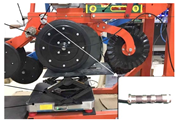 | Gao et al. [26]; Li et al. [73] |
| Angle | Depth-limiting arm | Contact measurement without wear and tear; subject to electromagnetic interference, sensitive to ambient humidity | 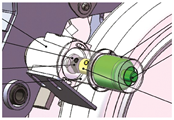 | Gao et al. [26] |
| Drying front | In front of the work component | Ingression detection; fast response time; high immunity to interference; lower accuracy; limited measurement range | 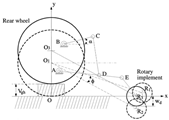 | Weatherly et al. [74] |
| Model | Features | Advantages and Disadvantages | |
|---|---|---|---|
| Advantages | Disadvantages | ||
| Noncontact detection | Measure the distance from the rack to the ground or between racks | Fast measuring speed, good durability, and stable operational performance | Susceptible to environmental influences, low measurement accuracy |
| Contact detection | Measure the pressure or the rotation angle on the frame | High accuracy, wide measuring range, high reliability | Susceptible to conditions such as temperature and humidity |
| Ingression detection | Measure the working parts entry depth | Measures physical and chemical properties of soil | Requires a lot of preliminary work, large detection error |
Disclaimer/Publisher’s Note: The statements, opinions and data contained in all publications are solely those of the individual author(s) and contributor(s) and not of MDPI and/or the editor(s). MDPI and/or the editor(s) disclaim responsibility for any injury to people or property resulting from any ideas, methods, instructions or products referred to in the content. |
© 2023 by the authors. Licensee MDPI, Basel, Switzerland. This article is an open access article distributed under the terms and conditions of the Creative Commons Attribution (CC BY) license (https://creativecommons.org/licenses/by/4.0/).
Share and Cite
Li, H.; He, J.; Wang, C.; Yang, W.; Lin, H.; Wang, Q.; Yang, H.; Tan, L. Research Progress on the Development of the Planter Unit for Furrowing Control and the Depth Measurement Technology. Appl. Sci. 2023, 13, 11884. https://doi.org/10.3390/app132111884
Li H, He J, Wang C, Yang W, Lin H, Wang Q, Yang H, Tan L. Research Progress on the Development of the Planter Unit for Furrowing Control and the Depth Measurement Technology. Applied Sciences. 2023; 13(21):11884. https://doi.org/10.3390/app132111884
Chicago/Turabian StyleLi, Hang, Jin He, Chao Wang, Wenchao Yang, Han Lin, Quanyu Wang, Hanyu Yang, and Lu Tan. 2023. "Research Progress on the Development of the Planter Unit for Furrowing Control and the Depth Measurement Technology" Applied Sciences 13, no. 21: 11884. https://doi.org/10.3390/app132111884
APA StyleLi, H., He, J., Wang, C., Yang, W., Lin, H., Wang, Q., Yang, H., & Tan, L. (2023). Research Progress on the Development of the Planter Unit for Furrowing Control and the Depth Measurement Technology. Applied Sciences, 13(21), 11884. https://doi.org/10.3390/app132111884







